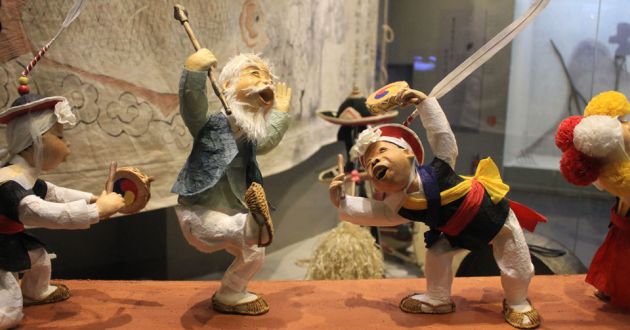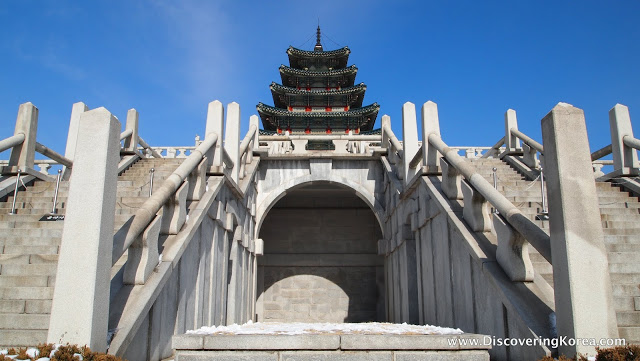Located inside the walls of Gyeongbokgung palace (경복궁) is one of Seoul’s best values – the entirely free National Folk Museum of Korea (국립민속박물관).

Established in 1945, the museum provides a great primer on the daily lives of Korea’s people over the centuries, from the prehistoric days until the present.
The museum’s purpose is not only to acquire and exhibit artifacts related to Korean folk life, but also to research and preserve it.
With an impressive collection of over 4,000 historical artifacts that’s presented in well-captioned displays, it’s a joy to peruse the National Folk Museum of Korea‘s three permanent exhibitions. Let’s take a closer look.
Exhibition Hall 1 is dedicated to the “History of the Korean People.”

This hall features everyday items commonly used among Koreans past and present, as well as a timeline of daily life as Korean culture developed from the Paleolithic and Bronze Ages to Korea’s territorial expansion during the Three Kingdoms and Silla eras.
Towards the end of this section, the exhibit chronicles the development of typography and printing during the Goryeo and Joseon dynasties, while the final part concludes with the impact of Korea’s gradual opening to the West.
Exhibition Hall 2 of the National Folk Museum of Korea focuses on the “Korean Way of Life.”
The displays in this section pay particular attention to the Joseon period, or the 518 years between 1392 and 1910, when Korea was colonized by Japan. The exhibit focuses on traditional village life, where cuisine, folk arts and crafts became highly refined.

The section also includes a recreated traditional marketplace, which served as the primary social venue during the era.
And finally, Exhibition Hall 3 of the National Folk Museum of Korea follows the major events in a traditional Korean’s life.
Organized through the life cycle of an upper-class individual during the Joseon era, visitors can witness the role of Confucianism on binding the family and greater society.
Furthermore, common rituals, such as the 100-day celebration for newborns, coming-of-age ceremonies, wedding protocol and state examinations are all detailed in beautiful exhibits.
The full life-cycle continues with explanations of the three-year mourning period that follows a parent’s death, and the ongoing memorial rites that are performed every subsequent year.
What’s remarkable is how many, if not most, of these traditions are still observed in modern Korea.

In addition to the three permanent exhibition halls are two special exhibition spaces. Recent examples include a rare collection of hats and shoes, the work of traditional artisans, and the just concluded 36th annual Korean Traditional Handicraft Art Exhibition.
Beyond the National Folk Museum of Korea’s excellent collection, is the fact that the building that houses these items is itself a piece of art.

The striking five-story pagoda is built atop a huge stone foundation, and makes for a focal point of the palace complex.
Once again, since access to the museum is free, it makes for a great bookend to any exploration of Gyeongbokgung palace.
For Your Information…
| Open: | 09:00-18:00 (summer), 09:00-17:00 (winter), Ticket sales stop 1 hour before close. Closed Tuesdays |
| Admission Price: | Free |
| Address: | Seoul Jongno-gu Samcheongdong-gil 35 |
| Directions: | Gyeongbokgung Station (#327) on Line 3, Exit 5 |
| Phone: | 02-3704-3114 |
| Website: | Official Site |
About Matt Kelley
Matt Kelly is native of the US Pacific Northwest and is half-Korean by ethnicity. He lived in Korea for five years and has written hundreds of travel guides for Wallpaper, TimeOut, the Boston Globe and Seoul Magazine and was a host for several different variety shows on Korean radio and television.
